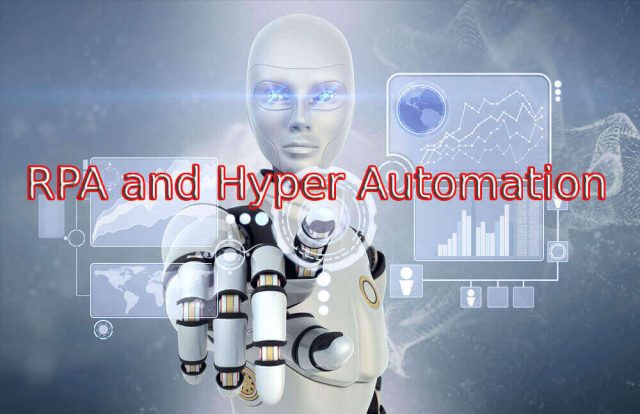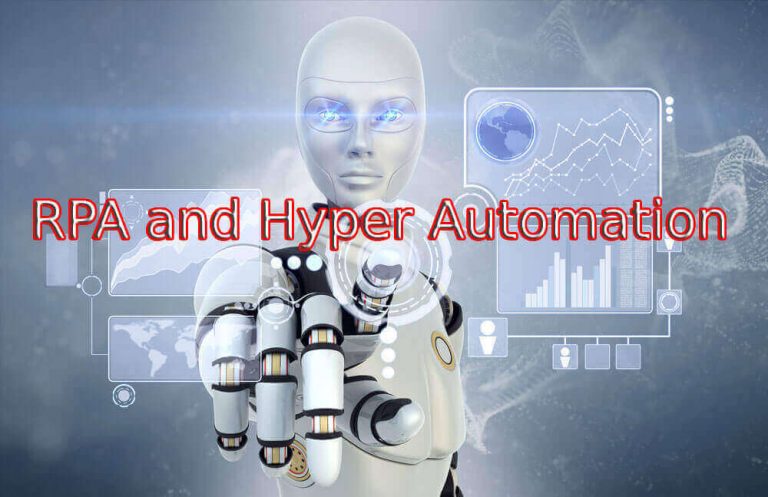Artificial intelligence is a science that helps us create technological software and intelligent robots, practically applied to life. In particular, process automation robots are technological inventions that are commonly used in businesses. Currently, there are two types of automated robots, RPA and Hyper Automation.
What is the difference between Robotic Process Automation and Hyper Automation? The following article will give you a detailed look at these two super-automatic robots.
Defining Robotics Process Automation (RPA)
Robotic Process Automation is a process automation software robot that specializes in handling repetitive tasks with fixed logic. This robot works entirely on computers. It is often referred to as “office technician” or “software virtual assistant”.
Process automation robots are not capable of self-learning. Humans set settings for RPA. After that, the robot will remember the process and repeat it, again and again, the next time. The advantage of RPA is the fast processing time with high accuracy. It can get the job done twice as fast as a human. So, the working time is unlimited and continuous.
Currently, there are two types of RPA robots: attended RPA and unattended RPA
RPA acts as an employee’s virtual assistant. It only works within a certain server, not universal to many different servers. The main purpose of attending is to assist office staff with desk jobs.
Meanwhile, unattended RPA is used to a wider range. It can operate on a server consisting of many different systems. The purpose of unattended is to automate the end-to-end process, where automated robots can do the entire process automatically. It does not require human intervention.
We will schedule a specific schedule, and then the automatic robot will do the whole workflow based on the schedule.
What is hyper-automation?
If RPA is called a process automation robot, Hyper automation is called an intelligent super automation robot. And why has Hyper automation reached a super automation robot?
Unlike RPA, Hyper automation is an automated robot capable of making judgments, analyzes, and actions based on the data stored in the system. It is the perfect combination of many different technologies.
Hyper Automation is developed on the core of RPA. It has been improved and expanded from many technologies: IBPMS, AI, ML, NLP,…
In addition, hyper Automation is considered the ultimate robot automation because it can use AI to fine-tune function and perception. Super-autonomous robots surpass the basic tasks of a conventional automated robot.
It intelligently coordinates tasks, then makes adaptive decisions and predictive insights.

The difference between hyper-automation and RPA
1. Simulate reasoning ability
Simulation is only available in Hyper automation. This robot relies on intelligent technologies of artificial intelligence to make predictive decisions based on available data.
This ability has great significance for businesses when it comes to recognizing trends as well as customer needs. The ability to infer depends on the quality of previously collected data.
An example: A super-autonomous robot can rely on a customer’s purchase history data to suggest an address for a buyer’s next purchase. With this feature, it is widely applied to courier companies, order ship applications.
2. Goals at work
In work, RPA is only responsible for completing the work in the available sequence. Meanwhile, Hyper automation is focused on getting the job done and focuses on business efficiency.
Super automated robots solve a complete business process by analyzing data to make the right decisions that improve work efficiency.
Example: To minimize cart abandonment, companies have resorted to Hyper Automation for help. This robot allows users to predict which products and options a customer might choose based on their purchase history.
This way, sellers can make product recommendations and use attractive images for each different audience.
3. Future RPA and Hyper Automation compatibility
The use of RPA will have certain limitations in the future. Because when you automate a process, the task lives in a silo of its own. In the end, we need to combine many modern studies to create a perfect circle. Therefore, Automated Robots will be limited in the number of tasks that can be performed.
But with Hyper Automation, it is different; it can reason intelligently. Businesses can easily modify processes as customer needs change.
4. Scope of use
RPA can only work on certain automated processes. Hyper Automation can work with more complex and creative tasks.
For example, in vending, super-automatic robots not only search for information and products that customers require. It also suggests to customers similar products. Thereby improving the business efficiency for the seller.
5. Application in practice
Because RPA cannot simulate and deduce itself, they are often used in office tasks such as data entry, manipulation on Office software, …
Hyper Automation can automate all the processes that can be done automatically. With the intelligence of sophisticated AI technology, it analyzes data accurately and makes inferences. We can use super-autonomous robots in more fields than RPA.
Conclusion
Through the article, we can certainly distinguish the difference between RPA and Hyper Automation. Many people ask why many businesses are still using RPA, knowing that Hyper Automation is more effective?
Each type of automatic robot has different advantages. Depending on how difficult or easy the job is, we can choose the right robot. In addition, the cost to pay for RPA is cheaper than Hyper Automation.
WinActor is a good quality process automation robot product on the market, owned by the NTT group. This is a unit specializing in providing technology solutions to serve the needs of users.
The company is always committed to product quality standards. In addition, with WinActor, you also get a long-term warranty policy. Therefore, customers can completely use our products with confidence.

WinActor is an RPA software solution by NTT DATA Corporation to help businesses master technology, create breakthroughs in the digital age 4.0.





